20 Interesting & Fun Blue Jay Facts You Never Knew
Last Updated on
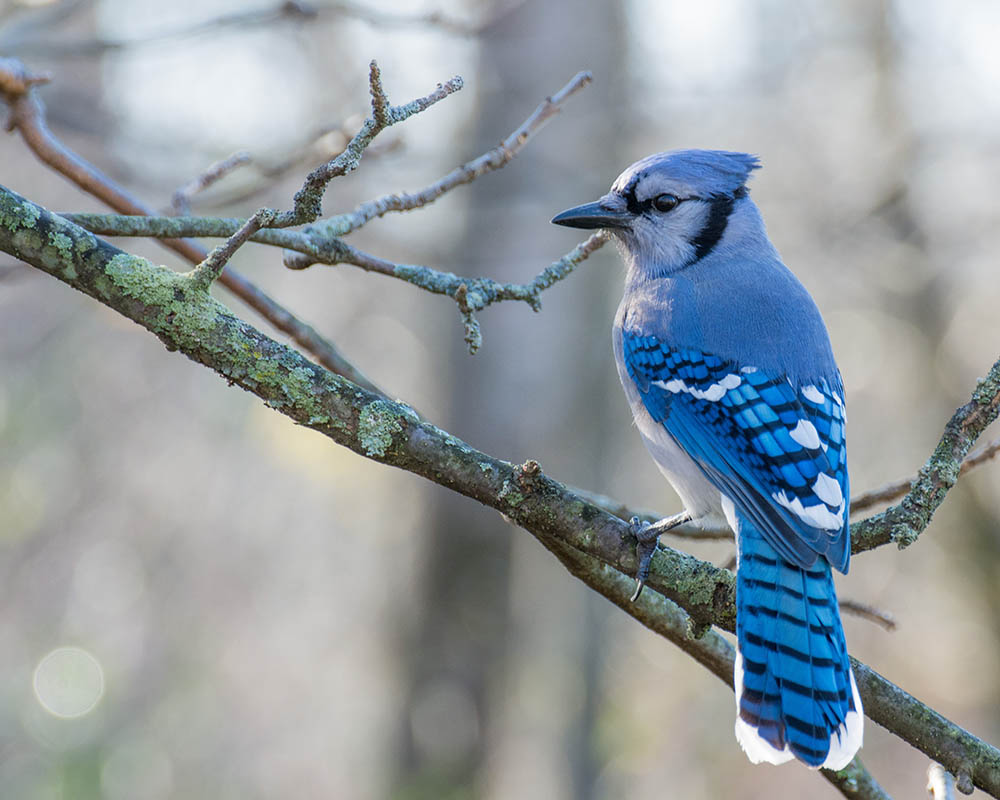
Few birds are equally as loved and despised as the Blue Jay (Cyanocitta cristata). They can be bullies at your feeders and hoard food. They’re aggressive with other birds and may even shoo humans away if they get too close to their nests. Yet, you have to admire a bird that is so intelligent and as good of a survivor as the Blue Jay.
According to the International Union for Conservation of Nature and Natural Resources (IUCN), it is a species of least concern with a stable, unfragmented population. Let’s take a closer look at the Blue Jay and see why this bird needs some love.

The 20 Blue Jay Facts
1. The Blue Jay Lives Throughout the Central and Eastern United States.
The Blue Jay is a year-round resident in states from Minnesota to Texas. You’ll also find it either as a resident or a summer visitor in the southern provinces of Canada. It’s sometimes seen as far south as Northern Mexico. The diversity of habitats it occupies is a testament to the Blue Jay’s adaptability. That also explains why this bird is expanding its range out west.
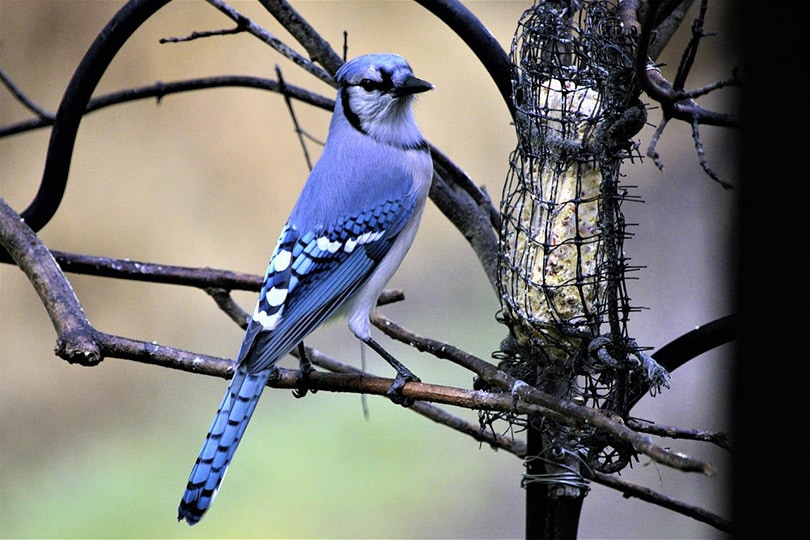
2. Blue Jays Are Intelligent Birds.
The Blue Jay is part of the Corvidae family, which includes other familiar species, such as ravens and crows. We know they’re social because of their loud calls and presence near other birds. However, these birds can mimic other calls, such as Broad-Winged Hawks and even people.
3. The Blue Jay’s Name Goes Back to Roman Times.
Experts theorize that the word “jay” comes from the Latin word “gaius,” perhaps a reference to the bird’s unique call. Several species have names that describe the sound they make, such as the Eastern Peewee. It’s also a proper Roman name. Gaius was one of five Roman jurists whose writings played a pivotal role in deciding court cases. However, we can only speculate how the bird got this particular moniker.
4. The Social Nature of Blue Jays Comes in Handy.
Blue Jays always seem to have a lot to say to each other. It turns out that it’s a good thing. They can warn others about predators in the area. Of course, that’s easier to do when in a flock or a party of jays. However, this behavior also helps these birds with problem-solving. It helps them find food and learn from each other. It’s an avian take on why two heads are better than one.
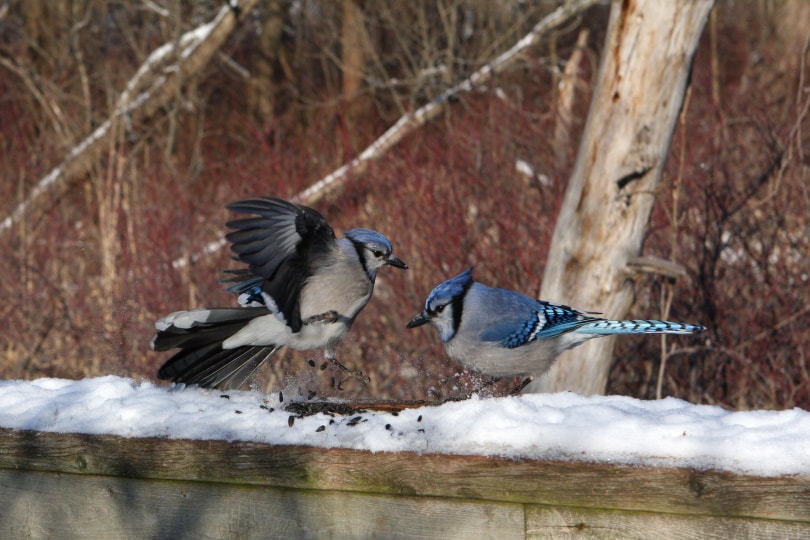
5. Blue Jays Don’t Confine their Stealing to Other Birds.
We know Blue Jays have no qualms about taking food from other birds. However, they also aren’t above stealing from squirrels. Researchers have observed Blue Jays looting buried nuts that squirrels have hidden for themselves. These rodents are intelligent, too. They will change their hiding spots if they figure out that jays are raiding them.
6. Blue Jays Play an Essential Role in Seed Dispersal.
Blue Jays are particularly fond of acorns, much to the chagrin of squirrels. Nevertheless, they often hide more nuts than they eat. That makes them a vital part of the ecosystem as seed dispersers, as long as the squirrels don’t find them first. Blue Jays will also eat fruits and other seeds.
7. Blue Jays Use Their Crests to Show Their Mood.
Birds with crests, such as cockatoos and cockatiels, often use them to communicate with one another. Think of a cockatiel getting startled by an unusual noise. Their crest points straight up to its full length. It’s the same with the Blue Jays, too. If they feel threatened, their upright crest is a warning to an intruder. It may make the bird seem larger and a more formidable foe.

8. There Are Other Meanings of the Word “Jay”.
The word “jay” had some very different meanings in the late 1800s, none complementary to one another. It was once a synonym for worthless. The theater used the term to refer to an untalented actor. Even Mark Twain used the word disparagingly, equating the bird’s undesirable behavior with politicians, tsk-tsking their stealing, deceit, and bad grammar.
9. Blue Jays Are Omnivores.
Blue Jays eat many other things besides acorns and fruit. They usually hold nuts in their feet to crack them open before feasting on them. Researchers have also observed tool use in captive but not wild birds.
Jays will consume various animals, too. They will prey on insects, frogs, small reptiles, and even mice. However, they’re not at the top of the avian food chain—that spot belongs to owls and raptors.
10. Blue Jays Prefer to Build Their Nests High in the Trees.
Birds are often predictable in where they will build their nests. Grasshopper Sparrows put their nests down in the grasses where they live. On the other hand, Blue Jays prefer trees, choosing well-concealed spots at least 10 feet above the ground. While well-made, they’re usually just a loose mass of sticks and whatever else they can find. A well-chosen site gives the nest better protection from the elements and camouflage from predators.
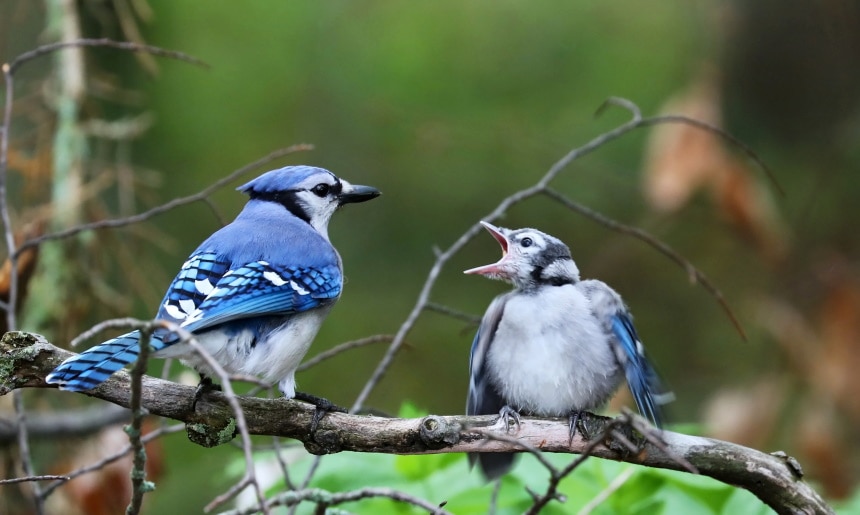
11. Blue Jays Are Good Parents.
Despite their bad rap, Blue Jays are good parents. They form monogamous bonds that will last until their mate perishes. The sexes are alike, which is typical for birds of this mating system. Both parents tend to the brood of three to six chicks, incubating and tending to them. They will also fiercely defend their young. Woe to the intruder that gets too close.
12. Blue Jays Aren’t Really Blue.
You read that right. Usually, when we speak of an animal being a certain color, it’s because of the pigment of their skin, fur, or feathers. That’s not the case with the Blue Jay. Its coloration comes from melanin, which is brown. They look blue because of light refraction caused by specialized cells on the barbs. If a feather gets damaged, it’ll appear brown.
13. Blue Jays Make an Unsavory Prey Species Edible Using a Unique Behavior.
You probably know about the defense mechanism that Monarch Butterflies have to avoid predation—they taste awful. The same is true for ants, which produce formic acid to deter predators. Unswayed by the flavor, Blue Jays simply wipe ants on their plumage to get rid of the acid before eating them. Scientists have dubbed this instinctive behavior anting.
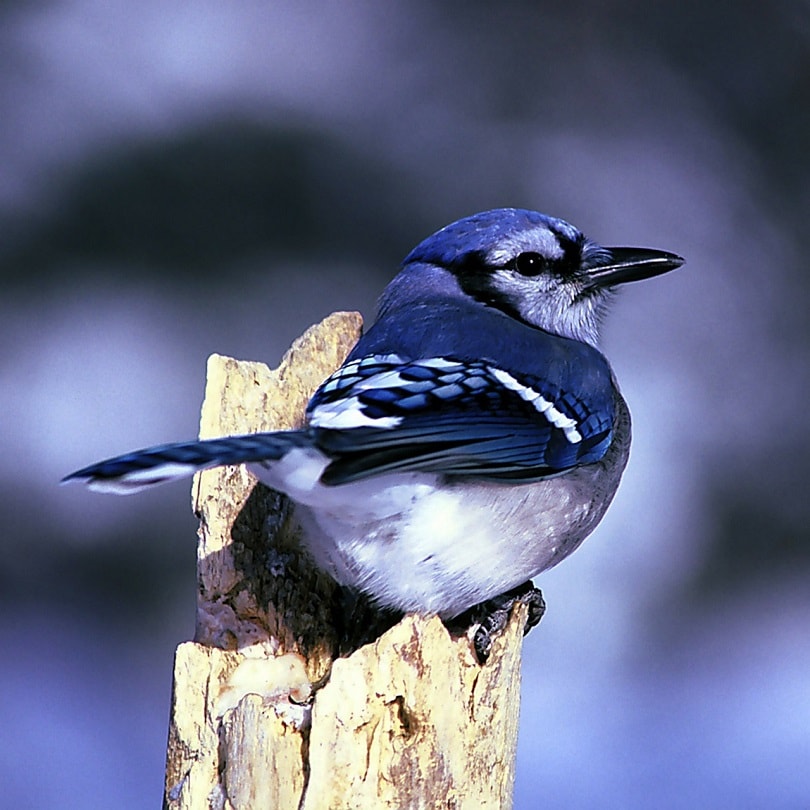
14. There Are Four Subspecies of the Blue Jay.
When species become spatially separated, they often evolve different traits, both physically and genetically. That’s the case with the Blue Jay. Science recognizes four subspecies. They include the Florida Blue Jay (Cyanocitta cristata semplei), Interior Blue Jay (Cyanocitta cristata cyanotephra), Coastal Blue Jay (Cyanocitta cristata cristata), and Northern Blue Jay (Cyanocitta cristata bromia).
15. They Aren’t the Only Blue Jays.
The Blue Jay isn’t the only blue-colored jay. Other similarly named species exist, such as the Azure-Naped Jay (Cyanocorax heilprini), Azure-Hooded Jay (Cyanolyca cucullata), Azure Jay (Cyanocorax coeruleus), Turquoise Jay (Cyanolyca turcosa), and Ultramarine Jay (Aphelocoma ultramarina). None exist in the United States.
16. Blue Jays Are Relatively Long-Lived.
Many backyard birds don’t live very long for various reasons. Blue Jays are a notable exception. The average age for a wild bird is about 7 years old. It’s even more remarkable when you consider that they live in populated areas where outdoor and feral cats are often common predators. The oldest known wild jay was 17.5 years old. The oldest captive one was 26.25 years old.

17. There Are a Lot of Blue Jays.
Blue Jays have both an extensive range and a subsequent population. Current estimates are that they occupy over 2,177,616 square miles that are home to 13 million birds. The average clutch size and the species’ longevity are vital factors in maintaining these figures. The birds are more than replacing their numbers every breeding season.
18. Young Birds Are More Likely to Migrate.
We mentioned that many jays are year-round residents. Food is often the deciding factor. The Blue Jay can meet its needs because of its omnivorous diet. It has more options than a specialized feeder has. However, some younger birds will migrate.
19. Blue Jays Can Get West Nile Virus.
West Nile virus is a mosquito-borne illness. It causes flu-like symptoms in those who show signs of the disease. Animals, including birds, can contract it from infected insects. Unfortunately, the Blue Jay, like other members of its family, is especially susceptible. However, it’s worth noting that you can’t get the disease from handling infected birds, although you should take necessary precautions.

20. The Most Famous Blue Jays Are Northerners.
Undoubtedly the most well-known representatives are the Toronto Blue Jays. The team started as the Metro Baseball Limited. The club’s board of directors chose its avian moniker from over 30,000 entries submitted by fans. The winner became official on August 13, 1976. While it didn’t strike a chord with all right away, many embraced the uniqueness of the name.

Tips for Attracting Blue Jays
Blue Jays are well-adapted to the presence of humans. That’s why you’ll see and hear them frequently. It almost seems as if they’re more at home in our backyards than in the forests. We mentioned earlier that they are bullies when it comes to stealing food. However, if you’d like to attract them to your yard, you won’t find it difficult.
Blue Jays will readily eat and take a variety of seeds, from sunflower hearts to shelled peanuts. They won’t turn up their beaks to a well-stocked suet feeder, either. If you have an oak tree in your yard, you can bet that the jays will find it. Bear in mind that if you invite the Blue Jays, the squirrels will become party crashers. We strongly urge you to invest in a baffle to keep the food for the birds.

Conclusion
It’s unfortunate that Blue Jays have gotten such a bad rap for so long. As you’ve seen, they’re fascinating animals that have adapted to a changing world and the presence of people. They are intelligent and excellent parents, both admirable qualities. While they can be loud, it’s also interesting to watch and observe their behavior. Perhaps it’s time to rethink what we believe about these birds.
Featured Image Credit: Bruce MacQueen, Shutterstock
Table of Contents
- The 20 Blue Jay Facts
- 1. The Blue Jay Lives Throughout the Central and Eastern United States.
- 2. Blue Jays Are Intelligent Birds.
- 3. The Blue Jay’s Name Goes Back to Roman Times.
- 4. The Social Nature of Blue Jays Comes in Handy.
- 5. Blue Jays Don’t Confine their Stealing to Other Birds.
- 6. Blue Jays Play an Essential Role in Seed Dispersal.
- 7. Blue Jays Use Their Crests to Show Their Mood.
- 8. There Are Other Meanings of the Word “Jay”.
- 9. Blue Jays Are Omnivores.
- 10. Blue Jays Prefer to Build Their Nests High in the Trees.
- 11. Blue Jays Are Good Parents.
- 12. Blue Jays Aren’t Really Blue.
- 13. Blue Jays Make an Unsavory Prey Species Edible Using a Unique Behavior.
- 14. There Are Four Subspecies of the Blue Jay.
- 15. They Aren’t the Only Blue Jays.
- 16. Blue Jays Are Relatively Long-Lived.
- 17. There Are a Lot of Blue Jays.
- 18. Young Birds Are More Likely to Migrate.
- 19. Blue Jays Can Get West Nile Virus.
- 20. The Most Famous Blue Jays Are Northerners.
- Tips for Attracting Blue Jays
- Conclusion
About the Author Chris Dinesen Rogers
Chris has been writing since 2009 on a variety of topics. Her motto with all of her writing is “science-based writing nurtured by education and critical thinking.” Chris specializes in science topics and has a special love for health and environmental topics, and animals of all shapes and sizes.
Related Articles:
10 Types of Hummingbirds in Arkansas (With Pictures)
8 Types of Hummingbirds in Nebraska (With Pictures)
5 Types of Hummingbirds in Idaho (With Pictures)
3 Types of Hummingbirds in Mississippi (With Pictures)
8 Types of Hummingbirds in Kansas (With Pictures)
5 Types of Hummingbirds in West Virginia (With Pictures)
5 Types of Hummingbirds in Ohio (With Pictures)
Where Do Nuthatches Nest? Nuthatch Nesting Habits Explained
